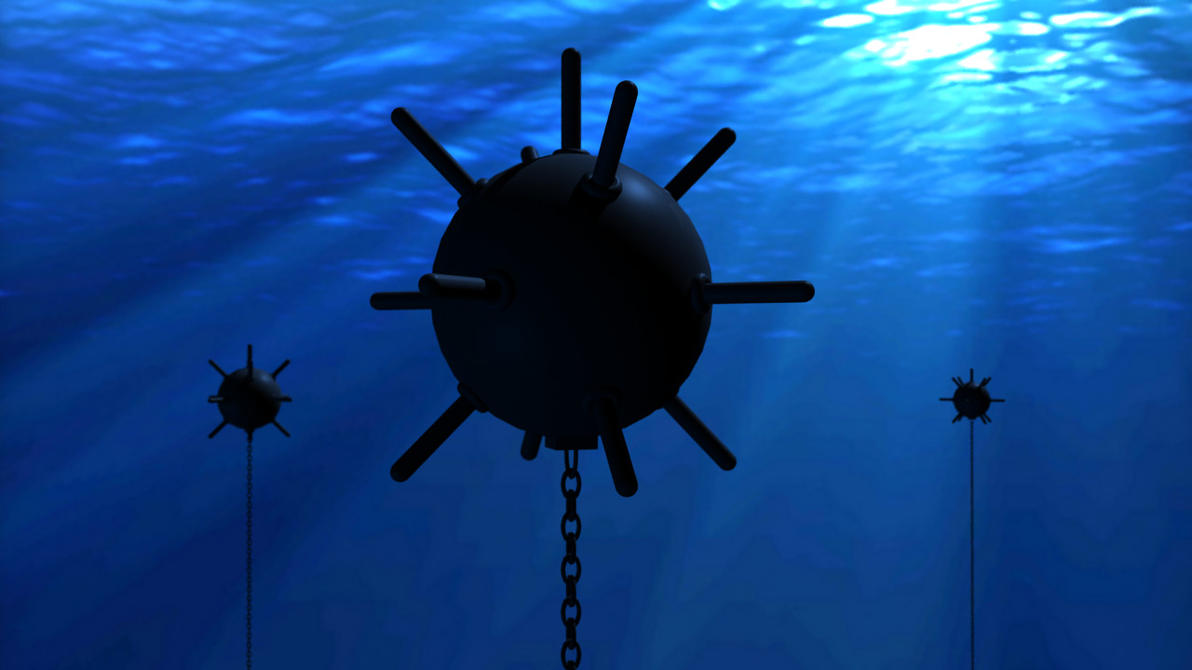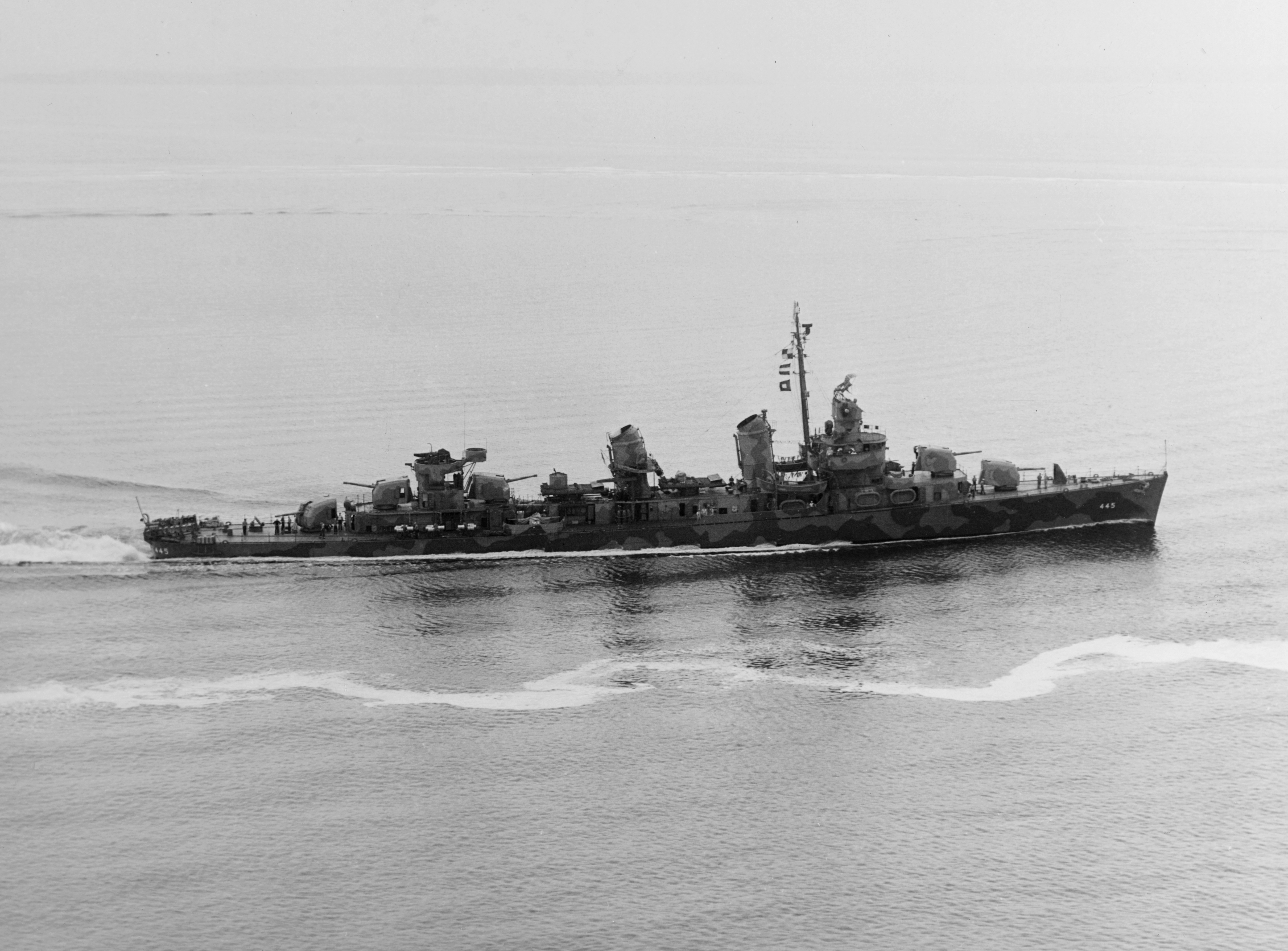New Command Scenario: Who’s Sinking Our Ships
 Database – DB3000
Database – DB3000
Author – Paul ‘Jorm’
Situation: In the last 12 hours two ships have been lost under mysterious circumstances on approach to Darwin harbour. It is suspected that they have both hit mines. Commercial traffic is still inbound and ships are maintaining holding patterns on the approaches to the harbour.
Military assets are scarce as all of Australias northwestern harbours are being cleared for mines. Indonesia has leant one Kondor class mine hunting vessel to aid efforts to reopen Darwin harbour. One Huon class is available just off Darwin.
One Orion from 11 Sqn out of RAAF base Edinburgh has just arrived as is being refuelled and reamed ASAP.
HMAS ANZAC is ready for ASW ops to the north.
Mission: Conduct mine clearing operations in the western and northern approaches to Darwin harbour.
If the mines were laid by submarines the culprit may still be in the area, use available assets to conduct ASW operations on the northern and western approaches.
All subsurface contacts are to be considered hostile.
New Command scenario: In the Calmest Waters Swim the Ugliest Fish
Database – DB3000
Author – ‘Pergite!’
“In the calmest waters swim the uglist fish” – Swedish Proverb
Background
The submarine hunts or submarine incidents were a series of several incidents involving foreign submarines that occurred in Swedish territorial waters during the Cold War, more specifically during the 1980s. In this time, there was intensive debate and speculation in Swedish media about the possibility of Soviet submarine infiltration of Swedish territorial waters.
The Swedish navy responded aggressively to these perceived threats, increasing patrols in Swedish waters, mining and electronically monitoring passages, and repeatedly chasing and attacking suspected submarines with depth charge bombs, but no hits or casualties were offically ever recorded.
Reports of new submarine sightings and television imagery of Swedish Navy helicopters firing depth charges into coastal waters against suspected intruders became commonplace in the mid-to-late 1980s. They remain, for many Swedes, one of the iconic images of the Cold War and of the Swedish relation to the Soviet Union—for some underlining what was considered a major threat to Swedish sovereignty.
Scenario setting
This scenario takes place on 1 May 1985. You are acting commander of the Swedish West Naval Command (Marinkommando Väst) with HQ in Gothenburg, the port of Scandinavia. Its a national holiday and limited forces are currently available through out the country.
Two patrol vessels HMS Modig and HMS Munter are out in the Kategatt, conducing vessel traffic controll along the heavily trafficed shipping route between Sweden and Denmark. Alert figher jets are standing by at Såtenäs airbase, and the helicopters are being readied at Säve airbase. Except for the officers, all other ranks throughout your organization are manned by conscripts.
OPORD DTG 010800MAY85
Situation
Weather:
DTG 010800MAY85 – 020800MAY85
Overcast 14C+ 10% for precipitation, 4-6m/s SW, calm seas.
Friendly forces:
(PCFG) HMS HUGIN underway patrolling shipping lanes, conducting vessel traffic control iot establish recognized maritime picture.
(PCFG) HMS MODE leaving GOTHENBURG, tasked to support HMS HUGIN
HKP 4 (Y 90, Y 92, Y 95) at SÄVE
Ready Air at SÅTENÄS AFB (AJ37 Viggen ; Gustav 21, Gustav 22, Gustav 23, Gustav 24)
USSR:
Surface threat:
Soviet surface group consisting of two destroyers, one frigate and one auxiliary ship reported to be operating in the NORTH SEA.
Underwater threat:
31 unconfirmed submarine sightings have nationally been reported so far this year 10 of these on the west coast. The latest active engagement (22 depth charges dropped) against a foreign sub-surface contact was on in february 1984.
Civilian situation
Busy shipping lane (Route-T) running S-N between DENMARK and SWEDEN.
Commercial fishers active along the SWEDISH WEST Coast.
Commercial passenger traffic from GOTHENBURG to DENMARK, NORWAY and GERMANY.
Mission
Neutralize foreign submarines operating unlawfully inside SWEDISH territorial waters.
Patrol SWEDISH maritime zone and conduct vessel traffic control.
Execution
Within means and capabilities fulfill above stated mission
ROE
Free to engage any sub-surface threats within SWEDISH territorial waters (12nm from baseline).
All other ROE are in self defence.
Logistics
Forward refuling capability for rotary aviation possible in HALMSTAD.
Re-arming not possible from any forward positions at this time.
Command & Signal
EMCON
No restrictions
New Command scenario: Kiwi Strike
 Database – DB3000
Database – DB3000
Author – Nick Dowling, ‘NickD’
From 1991 until 2001 No. 2 Squadron of the Royal New Zealand Air Force was stationed at the Royal Australian Navy’s air base, HMAS Albatross. As well as providing conversion training for the RNZAF’s A-4K Skyhawk pilots, the squadron provided a training asset for the Royal Australian Navy. This training typically involved the squadron’s Skyhawks making simulated low-altitude attacks on RAN warships during exercises off the south coast of New South Wales.
This scenario simulates a full-squadron attack against the guided missile frigate HMAS Canberra in early 1998.
Situation
The guided missile frigate HMAS Canberra is sailing north from the Jervis Bay area towards Sydney. The ship is at full readiness.
Orders
Launch No. 2 Squadron’s A-4Ks to locate and destroy the frigate using their radar systems and Maverick guided missiles.
HMAS Canberra is at battle stations and can be expected to put up a strong defence. A coordinated low-altitude attack is likely to be the only way of penetrating the frigate’s air defences without suffering crippling losses.
New Command scenario: Attack on H-3
 Database – DB3000
Database – DB3000
Author – David Jarman, ‘Fox1’
Iran vs. Iraq
Time/Date: 4th April 1981 / 07:15 Zulu – 10:15 Local
Location: Iraq
Playable Sides: Iran
Background
After an Iraqi FROG-7 rocket attack on two of their cities, Iranian Air Force commanders were resolved to launch a fitting counterattack on Iraqi long-range strike assets.
Their aim was to eliminate or cripple the Iraqi Air Force’s Tu-16 and Tu-22 bomber squadrons, recently redeployed to the far west of the country and (in the minds of the Iraqis) outside the effective range of Iranian counterstrikes.
Unfortunately for the Iraqis, the officially-neutral Syrians had permitted Iranian tankers to be staged at Damascus Airport, opening up some interesting possibilities for Iranian strike aircraft…
Scenario Notes
This hopes to be a relatively close approximation of the actual H-3 ‘Blitz,’ with a secondary aim of providing an interesting PvP scenario for Baloogan’s Joint Command.
Orders for CMDR IRIAF
Date: 4th April 1981 / 14th Farvardin 1360
Command: Boeing 747-100, 11th TAS Detachment, Damascus.
Execution: At your discretion.
EMCON: Unrestricted.
Situation
Commander,
In the past months, our war against the Iraqi infidels has reached a stalemate, with both sides taking significant losses in the air and on the ground. Two weeks ago, in an attempt to regain the initiative on the northern front, the Iraqis used FROG-7 rockets on the cities of Dezful and Ahvaz.
It has been determined that Saddam must be punished for this dastardly attack on our people, and his long-range strike capabilities curtailed in order to protect our cities. The Tu-16 and Tu-22 bombers that have been plaguing us for so long must be dealt with.
Our intelligence sources have determined that the Iraqis have recently re-deployed their 7th and 8th Bomber Squadrons to the H3 airfield complex close to the Jordanian border, in the belief that this will put them beyond the reach of counterstrikes. Today, you will prove the Iraqis wrong.
Mission
- Perform a long-range strike on the H3 facilities to destroy or damage Tu-16 and Tu-22 bombers on the ground.
- Inflict maximum damage on Iraqi fighter aircraft that attempt to intercept your forces. This attrition will be beneficial to our plans for a 180-day air offensive in the near future.
Enemy Forces
The Iraqi Air Force remains a formidable opponent even after the losses we have inflicted. Fighter squadrons based at Mosul, Kirkuk, and Shaibah may prove troublesome to this operation, and are known to fly MiG-21 and MiG-23 variants.
Intelligence suggests that two squadrons of recently-acquired French Mirage F.1EQs may be operational at West Qayyarah.Baghdad continues to be heavily defended by air and surface assets. It is advised that you avoid this area during this operation.
Available Assets
Damascus International Airport*
- 2 x Boeing 747-100 Tanker / Airborne Command Post
*The Syrians have graciously allowed us to forward-deploy support assets to Damascus. However, as they officially remain neutral, we cannot have full access to their airspace. Use at your discretion.
Tabriz International Airport
- 12 x F-5E Tiger II
- 2 x Boeing 707-3J9C Tanker
Hamedan Air Base
- 10 x F-4E Phantom II
- 3 x RF-4E Phantom II
Dezful Air Base
- 16 x F-5E Tiger II
Omideyeh Air Base
- 8 x F-14A Tomcat
Time
You have 24 hours to accomplish this task.
Historical Notes
To increase their chances, Iranian commanders decided to fly their aircraft along a northern route passing over the mountains of the Iraqi-Turkish border. The Iranian attack against the H3 airfields was the most successful Iranian air operation since 1967. Several Iraqi aircraft were destroyed in the air and on the ground, with no loss of life on the Iranian side.
New Command scenario: Yellow Sea Patrol
 Database – CWDB
Database – CWDB
Author – ‘Coiler12’
In early 1949, with the Chinese Civil War in full swing, a pair of American destroyers conducts a patrol of the Yellow Sea.
ATTN: Commanding Officer, USS Morgan
INTEL/SITREP:
With the advance of Chinese Communist forces in the area, CINCPAC has ordered a precautionary patrol in the western Yellow Sea, near the Shandong Peninsula.
ENEMY FORCES:
Chicom forces are estimated at two to ten attack craft, a mixture of Soviet-built torpedo boats and armed junks. There are also reports of them operating captured Nationalist aircraft in the area.
FRIENDLY FORCES:
Your task force consists of the destroyers USS Morgan and USS Winters.
MISSION:
Remain in the area until relieved.
EXECUTION:
-The local population is believed to be extremely sympathetic to the Red cause and is likely to report your position to the PLA if you are spotted. Nonetheless, do not engage any vessel unless it is armed or an obvious warship.
-Avoid serious losses.
COMMAND AND SIGNAL:
Command: USS Morgan
Signal: EMCON State C (Unrestricted Emissions)





